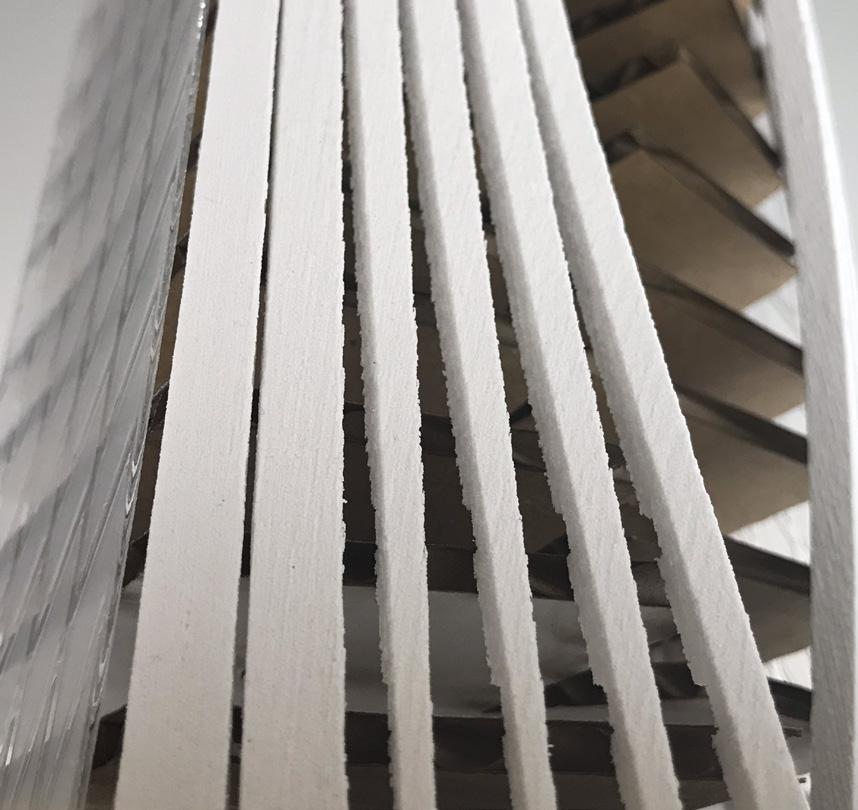










Computational
Advisor: Nicholas Hoban
Course: 3rd Year Undergraduate Technology Studio 1
Year: 2020
Team: Group Work [team of 3]
This third year studio involved the use of computational design tools in order to generate better living solutions for University students living in Toronto’s downtown core.



Spatial organzation and adaptability plays a significant role in the healthy development and well being of the lives of people and especially students. This was made especially more apparent during the 2020 Covid-19 epidemic. With this project our team was inspired by the work of MIT architect and researcher Skylar Tibbits who engages the question of spatial flexibility and adaptability in their research project; Transformable Spaces.
Upon reviewing the work of Skylar Tibbits and other expressions of adaptable architectural projects, our objectives as a team was to apply the lessons learnt in a local context that directly impacted the lives of fellow students such as ourselves.

Our suggested intervetion creates a balcony space that can be used all year round, and adapt to various environmental, emotional and social situations. The balcony functions as a form of ‘living space’ that is both alive and resposnive to its users. This project builds up on Skylar Tibbits’ precedent by proposing an adaptable space that responds to the well being of its occupants, which we believe contributes to an architecture that focusses on people rather than purely design.



Advisor: Jay Pooley
Course: 1st Year Undergarduate Design Studio
Year: 2018
Team: Individual
This gallery pavillion is inspired by Piet Mondrian’s famous piece ‘Victory BoogieWoogie’ and the vibrant communities of Toronto’s Kensignton Market. Kensignton Market is an area that is saturated with communities from diverse cultural and ethnic backgrounds. This is expressed in the many different restaurants, cafes and shops which all have a distinct personalit to them.
For this reason I decide to design a pavillion that expresses the diversity of the community in Kensington Market. The pavillion comprises a simple linear design consituting walls of different porosity, thus encouraging visitors to interact with it as a maze. The walls attempt to capture Piet Mondrian’s work in a spatial context. The walls also invite the community to treat them as a canvas which they can paint, draw or tag with graffiti on so as to express themselves.




Institutional
Advisor: Christos Marcopoulos

Course: 2nd Year Undergarduate Design Studio

Year: 2019
Team: Individual
The second year undergraduate design studio introduces students to the architectural design process and the fundamentals of architecture: wall, openings, floor, roof, and stairs. The course culminates in the design of enclosed study spaces on an inhabited parking lot site at the University of Toronto.


My project was informed by the natural forms of mountains which were abundant in my two previous hometowns, both Nairobi and Goma. I therefore wanted my design intervention to introduce a building that felt like a mountain, combining both the expression of modernist design together with nature inspired conventions. The primary area of focus is the central staircase which runs the full heigh of the building. The staircase is meant to be experienced as a short hike, and used as a natural trail, allowing students to make use of natural and comfortable external study space.
The proposed student commons comprises of a basement level and 3 above ground levels. Each level is envisioned to comprise a different ambience, thus providing a relaxing environment for students to rest, socialize or study.

Parametric
Second Tower Iteration
FInal Tower Iteration
Advisor: Nicholas Hoban
Course: 2nd Year Undergarduate Technology Studio
Year: 2019
This second year studio introduced students to diverse computational tools and their application on the design process. The class comprised of the design and building of three distinct towers using generative design and scripting.
In the design of my initial three towers, and the detailing of the final one, I was inspired by two natural forms in nature: the cave and the forest. I wanted to be able to capture these to forms in my final design of the tower and its facade. The design of the tower was also inspired by the low-rise architecture of Nairobi.
Unlike in Toronto where this project was meant to be implemented, Nairobi comprises mostly of comunal living. Architecture in Nairobi is porous and open both on the inside and the outside. This allows for a variety of lighting conditions, but most importantly creates a different environment for which the community can interact and connect. I wanted to be able to express this in my final design.`v
Exploded Axonometric Showing Facade Detail First Tower Iteration



Photographs
The project started with the design of three ‘twisting’ towers. In all three of my towers I wanted to express a level of porosity that would allow for creative and unexpected formal interactions between the architectural elements while als creating surprising forms of relationships between the tower’s residents.







 Tower Collage | Model
B. Generate Parametric Facade C. Generate Building Exo-skeleton D. Populate Final Building Form
Tower Collage | Model
B. Generate Parametric Facade C. Generate Building Exo-skeleton D. Populate Final Building Form